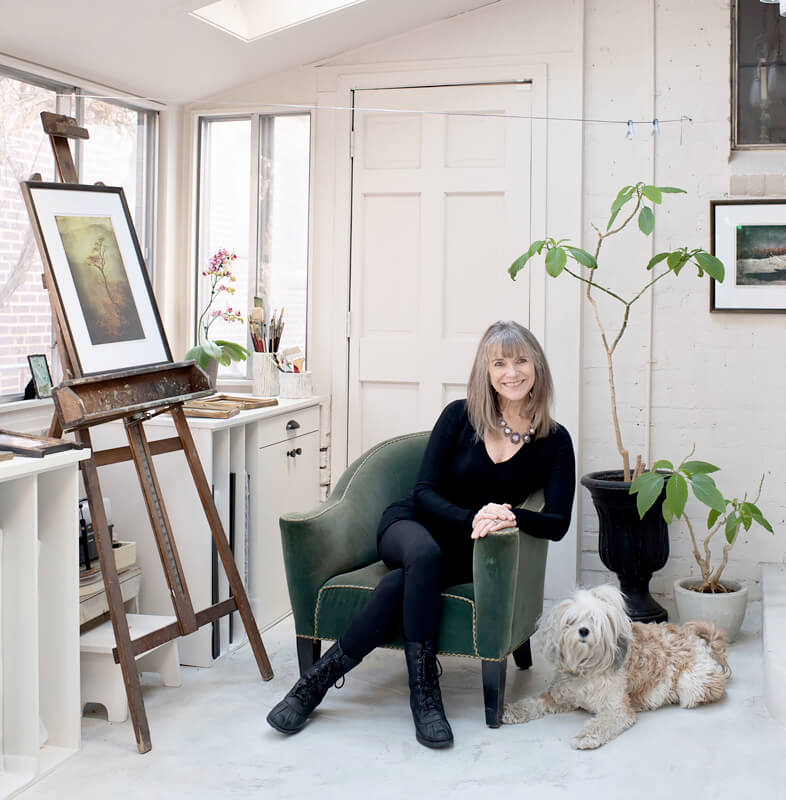Wendi Schneider is visual artist illuminating impressions of grace and vanishing beauty in our vulnerable environment with photography and precious metals. Her work is influenced by the lush landscapes of Memphis and New Orleans and a background in painting and art history - in particular Whistler and Steichen, and other Pictorialists and Tonalists.
She turned to photography in the early 1980s to create references for her paintings. Mesmerized by the alchemy of the darkroom, yet missing the sensuousness of oils, she layered glazes on her prints to create a heightened reality. She moved to New York in 1988, where she also photographed for advertising, book covers and Victoria Magazine, and to Denver in 1994, later sidelining her fine art practice while raising her son and working in commissioned photography, art direction, and design.
Inspired to return to fine art photography in 2010, she soon began her ongoing series 'States of Grace' - engaging digital to capture, layer and print her images, then applying gold or silver on verso to infuse the artist's hand and suffuse her subjects with the spirituality and sanctity of the precious metals - insuring each print is a unique object of reverence.
Her photographs have been shown in numerous solo and group exhibits internationally and are held in permanent collections at the New Orleans Museum of Art, the Memphis Brooks Museum, the Center for Creative Photography, Auburn University Library, and the Try-Me Collection.
Statement
My work is rooted in the serenity I find in the sinuous elegance of organic forms. It's a celebration of the senses anchored in the visual. I'm transfixed and transformed in the art of capturing the stillness of the suspended movement of light and compelled to preserve the visual poetry of these fleeting moments of vanishing beauty in our vulnerable environment.
I photograph intuitively - what I feel, as much as what I see. Informed by a background in painting, art history and design, I layered oils on silver gelatin prints in the '80s and '90s to find balance between the real and the imagined. My images are now layered digitally with color and texture, often altered within the edition, honoring the inconsistency. Printed on translucent vellum or kozo, these ethereal impressions are illuminated with white gold, moon gold, 24k gold or silver on verso, creating a luminosity that varies as the viewer's position and ambient light transition. My process infuses the artist's hand and suffuses the treasured subjects with the implied spirituality and sanctity of the precious metals - insuring each print is a unique object of reverence.
'States of Grace' has evolved organically into series within series that can be curated by subject, theme, treatment or feeling.
Galleries
A Gallery for Fine Photography
Anika Dawkins Gallery
Catherine Couturier Gallery
Galeria PhotoGraphic
Rick Wester Fine Art
Vision Gallery